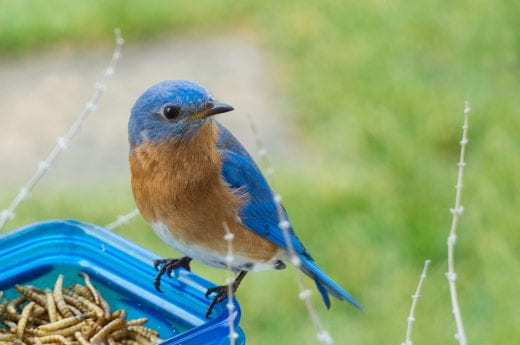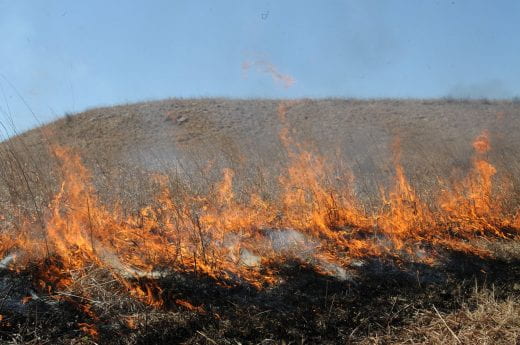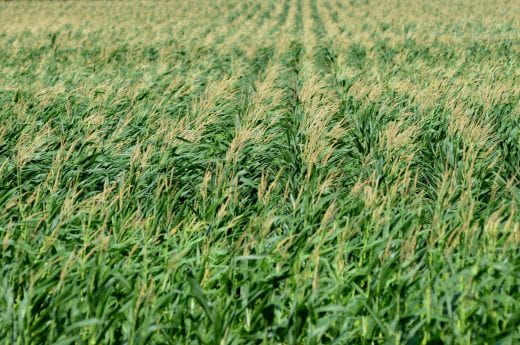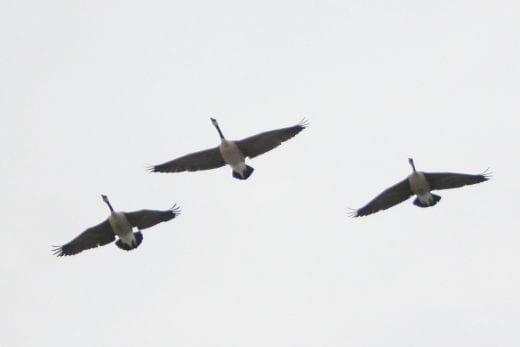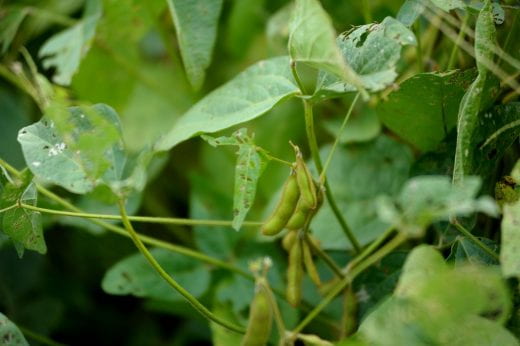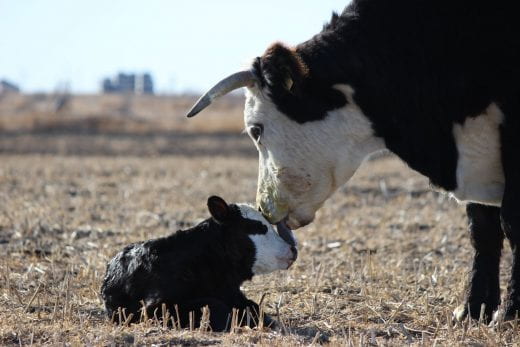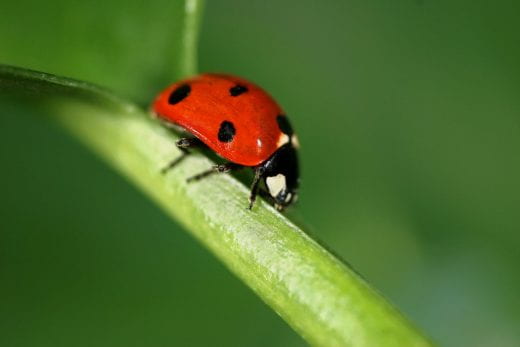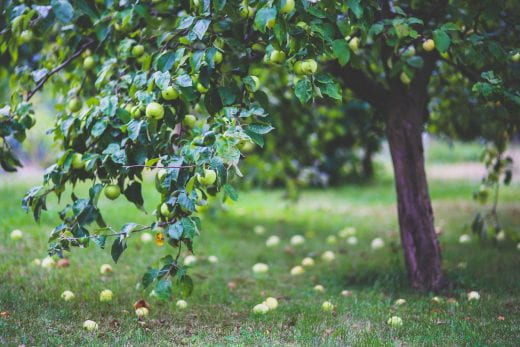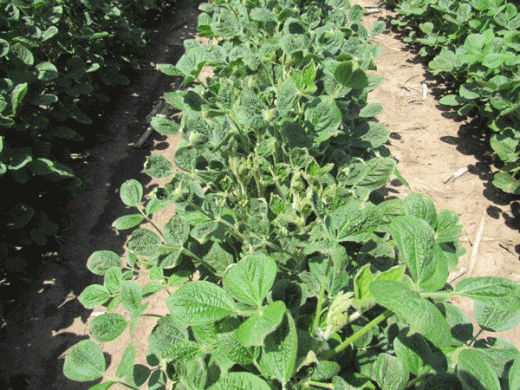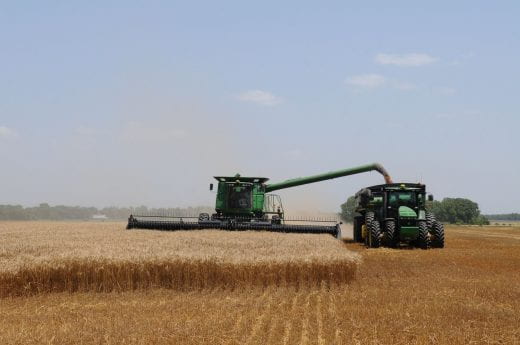In this week’s Better Kansas, we take a look at child care considerations, pets and your budget, the spring weather outlook, Cattlemen’s Day, and the most recent issue of the AgReport – my way of shedding light on events, resources and other information designed to make your life, businesses, communities and state better. It’s a small glimpse of what K-State Research and Extension across the state has to offer. Share on social media and subscribe! – Mary Lou Peter mlpeter@ksu.edu
Better Living, Better Communities
 MORE THAN HALF OF MOTHERS WITH CHILDREN UNDER THE AGE OF FIVE work outside the home, and that means many of those kiddos (12.5 million as of 2011) are being cared for by grandparents, child care centers, or others. It’s incredibly hard for moms and dads to go off to work every day if they’re not confident their child is in a supportive, nurturing and safe environment. A short article on the topic goes over some of the factors most important to young children’s development and may help provide food for thought when determining what the best child care situation is for your young child or grandchild.
MORE THAN HALF OF MOTHERS WITH CHILDREN UNDER THE AGE OF FIVE work outside the home, and that means many of those kiddos (12.5 million as of 2011) are being cared for by grandparents, child care centers, or others. It’s incredibly hard for moms and dads to go off to work every day if they’re not confident their child is in a supportive, nurturing and safe environment. A short article on the topic goes over some of the factors most important to young children’s development and may help provide food for thought when determining what the best child care situation is for your young child or grandchild.
TURTLES AND GERBILS AND BIRDS, OH MY! A few months ago, I posted information about pets and our budgets and decided to revisit the topic in view of a recent article about pet ownership. According to the underlying survey, 69% of Americans have a pet of some sort in their home. Not surprisingly, dogs came in No. 1 at 45%, cats No. 2 at 35% and fish No. 3 at 9%. Having pets can bring so many benefits, but does come at a cost. This fact sheet takes a helpful look at various considerations when it comes to pet ownership and our money. I’m right where pet owners find themselves sometimes, figuring out the right decision financially and quality of life-wise with my pet after getting a diagnosis from the vet that’s hard to hear.
Better Farming, Ranching and Gardening
 IT LOOKS LIKE WE MAY STAY A LITTLE CHILLIER THAN NORMAL INTO MARCH, according to the Kansas Climate Office, but the outlook for precipitation is somewhat less clear. The potential for spring flooding is greatest in eastern Kansas, while counties on the western side of the state could use some moisture. We have a big state! Take a look at the latest article on March weather and the spring outlook, complete with information and precipitation maps showing where we are compared with average years.
IT LOOKS LIKE WE MAY STAY A LITTLE CHILLIER THAN NORMAL INTO MARCH, according to the Kansas Climate Office, but the outlook for precipitation is somewhat less clear. The potential for spring flooding is greatest in eastern Kansas, while counties on the western side of the state could use some moisture. We have a big state! Take a look at the latest article on March weather and the spring outlook, complete with information and precipitation maps showing where we are compared with average years.
 K-STATE’S ANNUAL CATTLEMEN’S DAY 2020 IS COMING UP MARCH 6 in Weber Hall on the Manhattan campus, where attendees will find presentations and information about research results on everything from forage sampling and analysis to calving to genetic and reproductive trends in the global beef industry and more. Plus, the camaraderie of fellow producers! Vendors will have displays available throughout the day, and smoked brisket and Cajun-spiced catfish are on the lunchtime menu, compliments of U.S. Premium Beef and vendors. Check out the Cattlemen’s Day website for much more information.
K-STATE’S ANNUAL CATTLEMEN’S DAY 2020 IS COMING UP MARCH 6 in Weber Hall on the Manhattan campus, where attendees will find presentations and information about research results on everything from forage sampling and analysis to calving to genetic and reproductive trends in the global beef industry and more. Plus, the camaraderie of fellow producers! Vendors will have displays available throughout the day, and smoked brisket and Cajun-spiced catfish are on the lunchtime menu, compliments of U.S. Premium Beef and vendors. Check out the Cattlemen’s Day website for much more information.
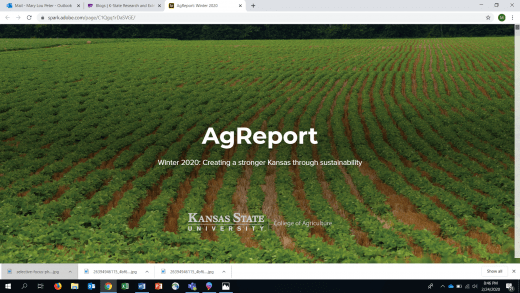 K-STATE’S LATEST ‘AG REPORT’ MAGAZINE HAS A NEW LOOK and includes profiles on several prominent College of Agriculture faculty members who are making a difference in Kansas and internationally through their research, teaching and outreach. The Winter 2020 AgReport also includes a student profile, update on a new building for the Department of Grain Science and Industry, a recent international livestock sustainability conference hosted by K-State and a brief look at education programs, research and extension across the state and ways that K-State Research and Extension is supporting five grand challenges the state is facing, including: water, health, global food systems, community vitality and developing tomorrow’s leaders.
K-STATE’S LATEST ‘AG REPORT’ MAGAZINE HAS A NEW LOOK and includes profiles on several prominent College of Agriculture faculty members who are making a difference in Kansas and internationally through their research, teaching and outreach. The Winter 2020 AgReport also includes a student profile, update on a new building for the Department of Grain Science and Industry, a recent international livestock sustainability conference hosted by K-State and a brief look at education programs, research and extension across the state and ways that K-State Research and Extension is supporting five grand challenges the state is facing, including: water, health, global food systems, community vitality and developing tomorrow’s leaders.
_
For more resources and activities, contact the K-State Research and Extension office in your area. Check out our other blogs and subscribe to our weekly emails here: https://www.ksre.k-state.edu/news/blogs/




